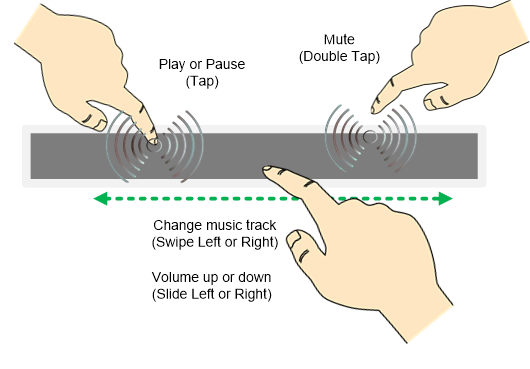TIDUEM5 December 2018
- Description
- Resources
- Features
- Applications
- Design Images
- 1System Description
- 2System Overview
- 3Hardware, Software, Testing Requirements, and Test Results
- 4Demonstration
- 5Design Files
- 6Software Files
- 7Related Documentation
- 8Terminology
- 9About the Author
3.2.2 Slider Sensor
A capacitive touch slider sensor shares many of the same characteristics as the wheel sensor. It is constructed as a linear copper pattern on the PCB containing 3 or 4 interdigitated sensing elements. And, like the wheel, the slider provides a high resolution linear output as the finger moves from left to right and reports a finger position anywhere on the sensor.
 Figure 5. Slider Sensor Gesture Example
Figure 5. Slider Sensor Gesture Example